- Home
- Paul Christopher
The Templar throne t-3 Page 2
The Templar throne t-3 Read online
Page 2
"Why is she interested in Jean de Saint-Clair?"
"Apparently she's writing a definitive history of the convent for a Ph.D. thesis at Notre Dame. Saint-Clair's name came up in her research."
"Apparently?"
"In my experience a great many people lie," said Morvan, trying to keep his voice neutral.
"You think she was lying?"
"I didn't say that."
"But you must have thought it or you wouldn't have mentioned it."
"Perhaps."
"A lying nun. Now that's interesting."
3
Mont Saint-Michel is a Walt Disney-style Fantasyland Castle, monastery and abbey on a tiny, rocky island half a mile off the Normandy Coast close to the mouth of the Couesnon River, not far from the town of Avranches. Once upon a time the narrow causeway connecting the island to the mainland was covered by the exceptionally high tides, but over the centuries the causeway has been built up so that the little island is always accessible.
The eleventh-century fortress and Benedictine refuge has been commercialized in direct proportion to its elevation. The lower levels of the island are crammed with overpriced souvenir shops, mediocre family hotels and expensive restaurants serving second-rate foods. By the time you reach the abbey and the top of the grand degre, the main staircase, you are back in the land of the pure and holy. There is one exception to this rule.
On the back of the island, away from the crowds and facing the sea, was a single-roomed chapel, nothing more than four stone walls and a slate roof. It was the Chapel of St. Aubert, named for Saint-Michel's founder and one of the oldest existing structures on the island.
The exterior walls are crusted with barnacles, the stones battered by seventeen centuries of pounding storms. It is only a few yards away from the original stone breakwater that once served as the island's port of entry. There is nothing between the chapel and the sea. Worn to near anonymity, a small granite statue of Bishop Aubert stands on the simple peaked roof, his back to the empty ocean.
The old wooden door of the chapel sagged outward, allowing a long drift of sand and dirt to creep in across the stone floor. It looked as though no one had been there for a very long time.
Holliday stepped into the chapel, his feet crunching on the sand and small shells blown in through the entrance. The new Nikon D3 he'd picked up for the trip to France hung from his shoulder. He'd been guided there from the abbey by several black-robed monks.
She stood at the far end of the bare room, contemplating the stone effigy of a knight that stood as the cap on a simple stone sarcophagus. Even in her simple gray skirt and jacket and black head covering she was striking, not quite beautiful in the classic sense but extraordinary-looking just the same, a hint of bright red hair peeking out from beneath the head scarf, a scattering of freckles across the bridge of her elegant, finely sculpted nose and a wide, full mouth. Holliday approached her and she looked up as he came nearer. Her eyes were pale-lashed and large, the irises a strange gray-green color. She looked as though she was in her late thirties, faint crow's-feet only just beginning to show.
He smiled, trying to put her at ease. She looked back at him curiously.
"May I help you?" she said. He bristled a little at the question. She made it sound as though the chapel was her private preserve.
"Just looking around," he answered. He stood beside her at the foot of the sarcophagus. The knight's effigy was a little strange; the figure was half turned, the right knee bent as though he was climbing a stair, the shield held to one side. On his surcoat was the clear design of a Templar cross, engrailed. The figure itself was covered in detailed chain mail from head to toe. At the feet was a stone plaque that read In Arcadia Est.
"There's not much here in the way of photo opportunities," said the woman, eyeing the big camera.
Just to annoy her, Holliday slipped the Nikon off his shoulder and clicked off a few shots of the knight. Then he turned quickly and took a shot of the woman herself. Her expression darkened and she frowned, her hands balling into fists at her side.
"I beg your pardon?"
"Afraid I'm going to steal your soul?" Holliday grinned.
The woman scowled. "Certainly not. You took my photograph without permission. That's an invasion of privacy."
"So this is your private chapel?"
"I'm not a tourist. I'm doing historical research."
"Who says I'm not doing the same?"
"I have a master's degree in the history of religion from Harvard," she snapped. "What's your degree in?"
"Medieval history. I have a doctorate from Georgetown University. Ph.D. trumps M.A. Beat you," Holliday said and laughed.
The woman turned beet red. "Is that true?"
"Would I lie to a nun?" Holliday answered, still laughing. "If I did, my old teacher Sister Claudille would come down from heaven and whack me across the back of the head with her special whacking- over-the-head ruler."
The gray-green eyes widened. "How did you know I was a nun?"
"Elementary, my dear Watson, you're wearing a modern 'Urbanist' Clare habit, black and gray. From the cut of the skirt I'd say it was one of the eastern European convents. Agnes of Prague, perhaps. Korektni?"
She looked totally flabbergasted.
"That's impossible!" she blustered. "You couldn't know all that!"
"And I couldn't know that this was the grave of Jean de Saint-Clair," said Holliday blandly. "Or that your name is Sister Margaret Emily."
The nun stared at him. After a moment her expression hardened.
"Brother Morvan," Sister Margaret Emily said, finally figuring it out.
"Bingo."
"Exactly who are you?" Sister Margaret Emily said frostily. "And what were you doing talking to Brother Morvan?"
"You've got quite the proprietary tone going for you there, ma'am," said Holliday. "Do you own Brother Morvan as well as the chapel?"
"I'm not a ma'am and I spoke to Brother Morvan in confidence."
"Your name is a state secret?" The young woman was getting under his skin. She was beginning to remind him of "Hot Lips" Houlihan on M.A.S.H., at least as far as her haughty attitude was concerned.
"I'm usually called Sister Meg," said the woman primly. "And you are?"
"John Holliday, U.S. Army, retired. My friends call me Doc."
"I wasn't aware that the army employed historians," said Sister Meg.
"Quite a few of them, actually," replied Holliday. "You know the old saying, 'those who ignore history are doomed to repeat it.' "
"George Santayana," said the nun.
"The army takes it quite seriously. Ignoring history leads to things like invading Russia in winter or taking big hollow horses into walled enemy cities. In my case, I taught the history of warfare at West Point."
"One of my ancestors went to West Point," said the nun, a hint of pride in her voice. "He was a general."
"Which one?" Holliday asked.
Sister Meg waved a dismissing hand. "It doesn't matter." She pointed down at the effigy of the knight. "Why are you interested in Jean de Saint-Clair?"
"He discovered a nautical instrument that gave the Templars a great advantage at sea. He may well have traveled as far as North America." He smiled. "I'm not quite sure why a nun would be interested in a man like him."
"The Convent of St. Agnes was founded in 1232 by Princess Agnes, a niece of the king of Bohemia," explained the nun. "She died in 1282. Before she died she entrusted a relic to the care of her own niece, the Blessed Juliana. The relic is known as the True Ark."
"As in Noah or the Ark of the Covenant?"
"Neither," said Sister Meg. "In Latin the word for 'chest' is arca. Over time the word has been invested with far more meaning than it really should. It simply means 'box.' The True Ark is the single most important religious relic in the world with the exception of the bones of Christ himself. I'm going to find it."
"Presumably there's something inside this ark of yours," suggested Holliday.
"There is," said the nun. "Historically the contents of the box were thought to have been the Holy Grail, the Crown of Thorns, the Holy Shroud, and the Ring of Christ."
"The main event," said Holliday.
"The fourteenth century was the age of relics," said the nun. "The True Cross, the Shroud of Turin, the bones of various saints. Whatever was in the box was felt to be significant."
"So Juliana gave it to Saint-Clair?"
"Yes. Juliana had been married to a member of the French royal family. When he died she was betrothed again, this time to a man she did not love, a cousin of King Philip who was also a bishop. Part of the dowry was the True Ark. Rather than marry the bishop and lose the ark she fled, with Jean de Saint- Clair's help. According to the stories he was the greatest navigator of his time. They vanished for a number of years. From 1307 to 1314."
"Interesting," said Holliday. "Saint-Clair was a Templar. The order was proscribed by King Philip in 1307. Saint-Clair would have been on the run from the king's men." Holliday paused. "Was it some sort of elopement? Were this Juliana and Saint-Clair lovers?"
"There is no evidence of that," said the nun coldly.
"What happened when they came back?"
"Jean de Saint-Clair reappeared in December of 1314, at the monastery of the Abbaye de Tiron in the town of Saint-Clair-sur-Epte. The Blessed Juliana joined the Convent of St. Agnes in Prague on Christmas Day of the same year."
"Good timing," said Holliday. "The Templars' two greatest enemies, Pope Clement and King Philip, both died in 1314; the Pope in April, the king in November. What about the ark?"
"There is no record of either Jean de Saint-Clair or the Blessed Juliana ever mentioning it again. Jean de Saint-Clair lived out his life as a monk and the Blessed Juliana became mother superior at the convent."
"They never saw each other again?"
"Not according to the convent archives."
"And the ark?"
"No one knows."
"A mystery then."
"It would seem so," said Sister Meg primly.
"Interesting," murmured Holliday, looking down at the sarcophagus.
"What is?"
"He's buried as a knight, not a monk. The wording on the plaque at his feet doesn't tally with the monastery at Tiron, either. It would have been more likely to have had a Mason's symbol-a compass and a square maybe-not an inscription in Latin. In Arcadia Est."
"In Arcadia I am," sad the nun, translating literally.
"Very Yoda-ish," said Holliday. "But what does it mean, exactly?"
"Arcadia was the romantic ideal during the Renaissance," replied the nun.
"But not in 1314," answered Holliday.
"Originally it was a Greek province," said Sister Meg. "It still is."
"Unlikely Saint-Clair would mention it on his grave."
"Then what?" Sister Meg said.
"It was the original name for the maritime provinces of Canada," said Holliday. "The first French settlers there-from around here actually-were referred to as Acadians. When they were thrown out by the English in 1775 a lot of them went to Louisiana. It's the origin of the name Cajun-Acadian with the A knocked off."
"Making history fit into your theory," said Sister Meg, the expression on her face not quite a sneer.
"If the shoe fits," Holliday said with a shrug.
"I'm not sure that it does."
"And I'm not sure that it doesn't," snapped Holliday. "Have you got a better idea?"
"Maybe it doesn't mean anything at all," said Sister Meg. "I'm certainly not going to Canada on a silly whim and a story about Cajuns."
"How about Prague?" Holliday responded.
"Excuse me?" Sister Meg said.
"You said your convent had archives," replied Holliday.
"Very complete ones, as a matter of fact. Although the old convent itself is now part of the National Gallery."
"Can you get us into the archives?"
"Us?"
"Why not? We both want to know what happened. I want to know where Saint-Clair went and you obviously want to know what happened to the ark, right?"
"I'm not sure it would be proper," said Sister Meg. She flushed again. Holliday couldn't help smiling. Innocent women didn't blush that easily. Either Sister Margaret Emily had a very fertile imagination for a nun or she had a past. She saw the smile and the blush became even darker. She scowled again angrily. "What are you smiling about?"
"You're blushing," said Holliday.
"I most certainly am not!"
"Could have fooled me, Sister."
"You're a boor," answered the nun.
"But you're still blushing."
"Go away!"
"France is still a relatively free country," said Holliday. "Liberty, Equality, Brotherhood… or in this case sisterhood. You go away first. I'll follow you all the way back to Prague. The Czech Republic is a free country now, too."
"You're insufferable!"
"Maybe, but that doesn't change the situation." Holliday held up a placating hand. "Listen, Sister, let's call a truce here. We both want the same thing. We're both historians. I know why Saint-Clair was considered to be the greatest navigator of his time and you're determined to find the True Ark. Why not share our knowledge, join forces?"
"I'm not sure I want to join forces with a man like you. I don't even like you."
"I'm hurt," Holliday said and grinned. "But we don't have to like each other to reach a common goal. We didn't much like the Russians during World War Two, either, but they were still our allies."
"I barely know you."
"It's a long drive to Prague," answered Holliday. "Your rental car or mine?"
4
Most movies, books and television shows refer to Central Intelligence Agency Headquarters as being located in Langley, Virginia. Appropriately enough, however, there is no such place; Langley was simply the name given to the old woodlot estate purchased by the federal government for the CIA's new offices back in the 1950s. The actual location is in the suburban district of McLean, Virginia.
The original CIA campus is now half a century old and looks it. Even the "new" addition is heading into its fourth decade of use. The huge computers, once state-of-the-art and requiring their own power lines, could now be replaced by a no-name knockoff PC from Wal-Mart. The most common physical ailment at the CIA is food poisoning and the cafeteria has been cited for more food and hygiene violations than any other government food service operation in the Washington area. The workers there simply cannot learn to wash their hands after using the toilet facilities.
The director of operations was in his seventh-floor office and regretting his choice of the hamburger platter at lunch. Joseph Patchin was a career CIA man and had been in the clandestine services for the better part of thirty years, serving in stations from Berlin to Kuwait. He spoke half a dozen languages fluently and could get by in half a dozen more. He was married and had three grown children he had barely spent any time at all with while they were growing up. His wife put up with him for the security of his large salary, his pension and the mortgage-free, equity-heavy house they owned in Chevy Chase. He knew that when a heart attack finally killed him, she was going to move to Florida. She'd had a regular string of lovers for the past twenty years and he hadn't really cared for the last fifteen.
There was a sharp double tap on his office door, like the sound of a professional killer giving his victim two to the back of the head. The fact that he thought in terms like that sometimes bothered him, but not too often. It came with the territory. He kept a bottle of expensive Johnny Walker Blue Label in one desk drawer and an old Ruger Single Six.22-caliber revolver in another desk drawer specifically for killing himself if it ever became necessary. He kept it loaded with long rifle mushroom bullets, which would turn his brains into frappuchino but which didn't have the velocity to exit the skull and wouldn't make a mess. That was the kind of person he was: always thinking about the other guy.
"Come," he said
to the tap at the door.
His DDO stepped into the room. Deputy Director of Operations Mike Harris had the seamed, squintyeyed face of a Charles Bronson and the lanky, shuffling body of a professional boxer. He looked like everybody's idea of a bad guy and he played up to his looks, wearing rumpled suits and Peter Falk trench coats. He had a surprisingly smooth baritone voice that made him sound like Al Martino, the Johnny Fontane character in The Godfather.
"You called?" Harris said, sitting down in the comfortable chair on the visitor's side of his boss's desk.
"I did," said Patchin. "What do you know about Rex Deus?"
"They're the ones who think they're the direct descendants of Christ. Most of them are supposedly descended from the ancient kings of Europe or something. They're supposed to be allied with those excommunicated anti-Semitic types who think all of those photographs of Auschwitz and Buchenwald were faked. Nut jobs, basically."
"What about domestically?" Patchin asked.
"Here in the States?"
"That's what domestically usually means."
Patchin's second in command shrugged. "I have no idea. Why?"
"I'm hearing murmurs."
"What kind of murmurs?"
"White House murmurs."
"About Catholic fringe groups?"
"About people with a great deal of money and power. In the final analysis their religious affiliation is irrelevant."
"So what does it have to do with the Agency?" Harris asked.
"More murmurs," said Patchin obscurely.
"About what?"
"Little birds are telling me there is a Rex Deus mole in Operations."
"Dear God, not another mole hunt," groaned Harris. "The last one had the whole place tied up in knots for years."
"The last one led us to Aldrich Ames," answered Patchin dryly.
"Except the Cold War is over now."
"This isn't about war, hot or cold. This is about a power grab."
"I don't get it."
"For the moment you don't have to. Just find the mole."
"How am I supposed to do that?"
"According to my source our mole is interested in a pair of historians who are snooping in places they shouldn't."

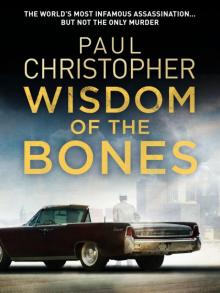 Wisdom of the Bones
Wisdom of the Bones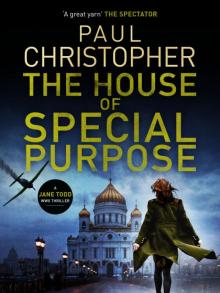 The House of Special Purpose
The House of Special Purpose The Second Assassin
The Second Assassin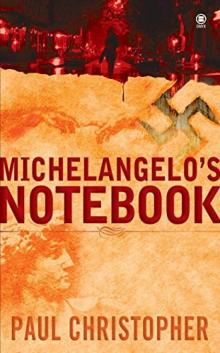 Michelangelo's Notebook
Michelangelo's Notebook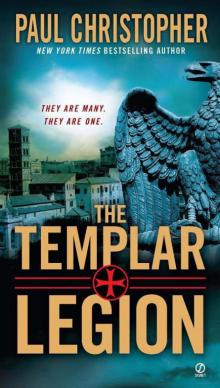 Templar Legion
Templar Legion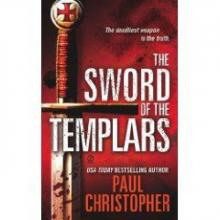 The Sword of the Templars t-1
The Sword of the Templars t-1 Red Templar
Red Templar The Aztec Heresy
The Aztec Heresy The Templar Legion
The Templar Legion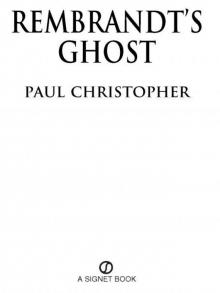 Rembrandt's Ghost
Rembrandt's Ghost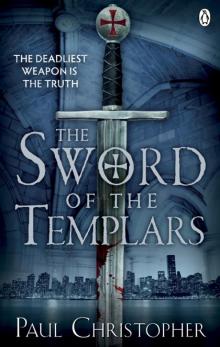 Sword of the Templars
Sword of the Templars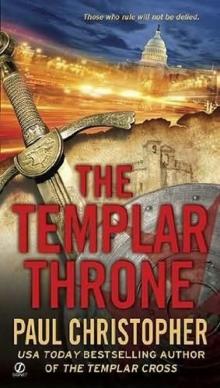 The Templar throne t-3
The Templar throne t-3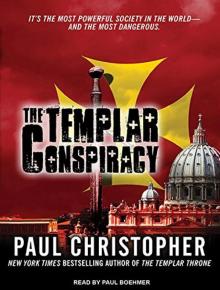 The Templar Conspiracy
The Templar Conspiracy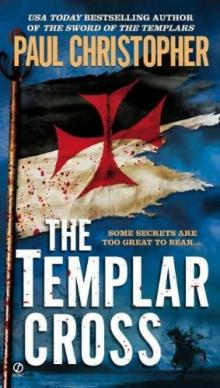 The Templar Cross t-2
The Templar Cross t-2 The Templar Legion t-5
The Templar Legion t-5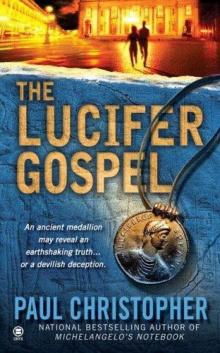 The Lucifer Gospel
The Lucifer Gospel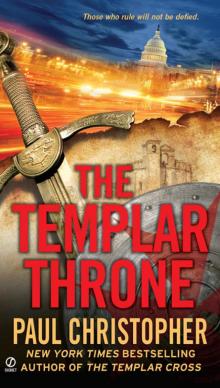 Templar Throne
Templar Throne Michelangelo_s Notebook fr-1
Michelangelo_s Notebook fr-1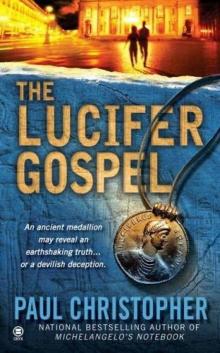 The Lucifer Gospel fr-2
The Lucifer Gospel fr-2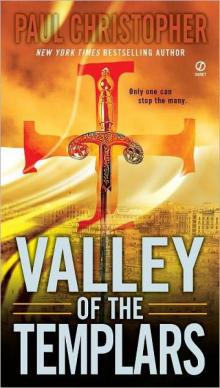 Valley of the Templars ts-7
Valley of the Templars ts-7 Valley of the Templars
Valley of the Templars Templar Cross
Templar Cross The Templar Throne
The Templar Throne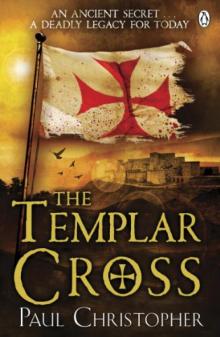 The Templar Cross
The Templar Cross Lost City of the Templars
Lost City of the Templars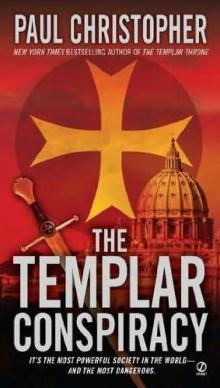 The Templar conspiracy t-4
The Templar conspiracy t-4 Templar Conspiracy
Templar Conspiracy